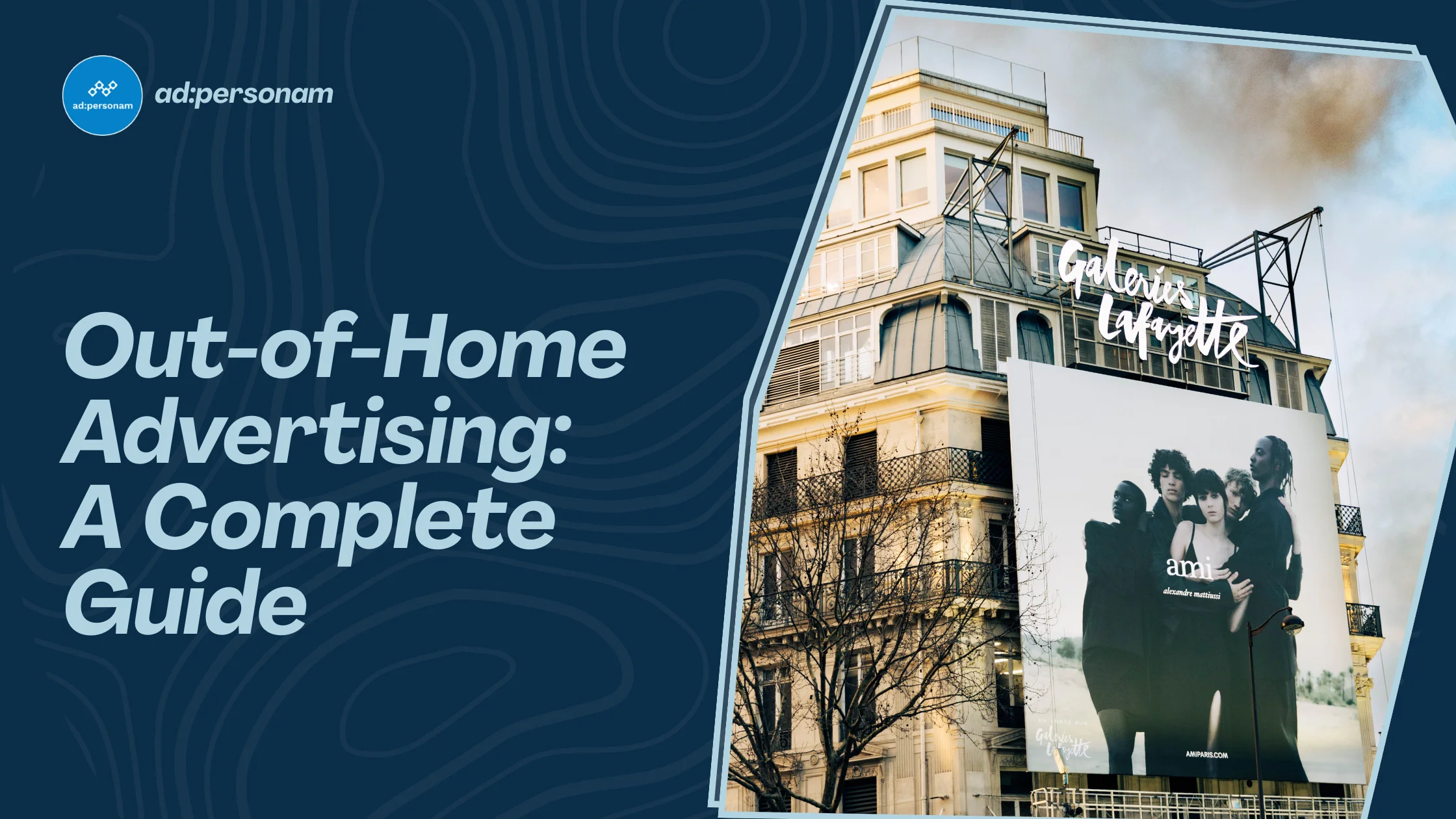Programmatic Advertising Trends in Italy: Growth and Key Insights for 2025
Explore the key programmatic advertising trends in Italy and discover growth opportunities shaping the market through 2025 and beyond.
Contents

Programmatic advertising trends in Italy reveal a rapidly maturing market that has become a cornerstone of digital marketing strategies for businesses of all sizes. The reason is straightforward: automated, data-driven ad buying enables companies to reach the right audience, at the right moment, with the most effective message, maximizing return on investment.
The Italian market has experienced remarkable evolution. According to Market Research Future, the value of programmatic advertising in Italy has grown from $0.96 billion in 2023 to $1.1 billion in 2024, with projections reaching $5.46 billion by 2035—representing a compound annual growth rate (CAGR) of 15.7%.
This growth trajectory was already strong in 2022, when over 65% of Italian digital advertising spend came from programmatic solutions. This percentage continues to rise as businesses adopt AI-powered technologies, first-party data strategies, and cross-channel formats. In this article, we examine the data and trends shaping programmatic advertising growth in Italy through 2025.
Key Growth Trends in Programmatic Advertising
2025 will be a pivotal year for programmatic advertising in Italy, marked by profound transformations in both technology and strategy. Here are the main trends to watch.
1. The Cookieless Era and the Return of Contextual Targeting
With browsers progressively eliminating third-party cookies, the advertising industry is entering a new era. Companies are shifting focus toward using first-party data—proprietary information collected directly from users—and more sophisticated forms of contextual targeting, which places ads based on the content of visited pages. This approach not only better respects privacy but also improves ad relevance and performance.
2. The Expansion of Retail Media
Retail media—advertising based on e-commerce and marketplace data—represents one of the fastest-growing segments. In Italy, major players like Amazon, Zalando, and Carrefour are transforming their ecosystems into full-fledged advertising hubs, enabling brands to reach consumers already in purchase mode with personalized messages. For retailers, this creates new revenue streams; for advertisers, it offers unique opportunities to drive conversions.
3. The Rise of Connected TV (CTV) and Programmatic TV
Streaming content consumption on smart TVs, OTT platforms, and apps like Netflix and Disney+ continues to grow in Italy. Programmatic CTV allows advertisers to purchase video ad space on these channels using the same automated, data-driven approach as digital advertising. According to a 2024 Magnite report, CTV penetration in Italy increased by +38% over two years, with more brands incorporating it into omnichannel strategies to boost awareness and engagement.
4. Increased In-App Mobile Advertising
Italy ranks among European markets with the highest smartphone usage rates: over 90% of the population accesses digital content via mobile devices. This has made in-app advertising a central component of programmatic campaigns. The combination of behavioral data, geolocation, and interactive formats enables advertisers to create more relevant and high-performing experiences.
5. The Strategic Resurgence of Publishers
With the decline of cookies and growing privacy concerns, premium publishers are reclaiming a strategic position in the programmatic landscape. By offering first-party data and safe, high-quality editorial environments, they become essential partners for campaigns focused on brand safety and effectiveness.
6. Artificial Intelligence in Programmatic
AI is set to further revolutionize the sector. Machine learning algorithms optimize real-time bidding, predict user behavior, and dynamically personalize ad messages. This not only improves campaign ROI but also reduces budget waste and automates complex tasks that previously required manual intervention.
Concrete Benefits for Advertisers
For businesses investing in programmatic advertising in Italy, the advantages are significant and measurable:
- Advanced targeting: Leveraging first-party data, machine learning, and predictive models enables reaching hyper-segmented audiences based on behaviors, interests, geographic location, and purchase intent.
- Cross-channel reach: Programmatic advertising distributes campaigns across web, mobile apps, social media, video, CTV, and digital out-of-home, creating consistent, integrated omnichannel experiences.
- Detailed reporting: Advanced dashboards provide real-time insights on impressions, CTR, CPA, and conversions, allowing surgical optimization of strategies.
Challenges and Risks in the Italian Market
Despite its enormous potential, programmatic advertising presents certain challenges, particularly in the Italian context. Here are the main concerns:
- Transparency and brand safety: The risk of appearing alongside inappropriate or unsafe content remains a primary concern for brands.
- Limited digital skills in SMEs: Many Italian small and medium-sized enterprises struggle to fully understand and leverage programmatic capabilities, slowing adoption and market penetration.
- Ecosystem complexity and privacy compliance: Platform fragmentation and the need to comply with GDPR regulations create operational barriers.
- CTV programmatic skepticism: Some traditional TV operators still resist advertising sales automation, hindering growth in this segment.
The Future of Programmatic Advertising in Italy
The future of programmatic advertising in Italy looks extremely promising. Projections through 2035 indicate a constantly expanding market, driven by technological innovation, data utilization, and growing advertiser sophistication. According to Market Research Future, the total market value will exceed $5.46 billion by 2035, with a 15.7% CAGR.
In the coming years, we'll witness:
- Greater integration between first-party data, CRM systems, and DSP platforms
- Growth of addressable advertising in traditional media as well
- Strengthened partnerships among brands, publishers, and technology platforms
- Evolution of AI's role, increasingly guiding planning and optimization autonomously
For businesses, investing today means securing competitive advantage tomorrow, building more effective, personalized, and scalable advertising strategies.
Frequently Asked Questions About Programmatic Advertising in Italy
What are the main programmatic advertising trends in 2025?
In 2025, key trends include widespread use of artificial intelligence, prioritization of first-party data, integration of Connected TV (CTV) into omnichannel strategies, and growing attention to privacy and transparency.
How much do Italian companies invest in programmatic advertising?
The Italian programmatic advertising market has surpassed $1 billion and continues to grow annually, driven by increased investment in online video and omnichannel campaigns.
Which sectors in Italy use programmatic advertising the most?
The sectors investing most heavily are retail and e-commerce, automotive, finance, telecommunications, and FMCG (fast-moving consumer goods)—all unified by the goal of executing data-driven campaigns with high precision.
You might also like

E-commerce Marketing: Complete Guide to Strategies, Tools, and Programmatic Campaigns
Discover how ecommerce marketing optimizes traffic, conversions, and sales through digital strategies and programmatic advertising.

Out of Home Advertising: Complete Guide to Programmatic OOH & DOOH
Learn how OOH and DOOH advertising work, key strategies for brand visibility, and how to run programmatic outdoor campaigns.

Contextual Advertising: The Complete Guide to Privacy-First Targeting
Discover how contextual advertising delivers effective, privacy-compliant campaigns without cookies. AI-powered targeting for the cookieless era.